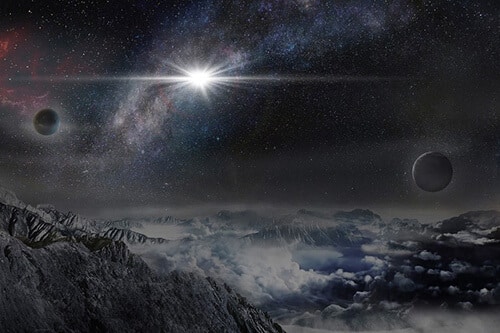The brightest supernova ever seen has been confirmed, but it still has astronomers debating over what unknown type of star could have been responsible.
Supernovas mark the brutal deaths of stars that collapse on themselves and blow up. They are some of the brightest and most energetic objects in the universe.
This one, called ASASSN-15lh, is about 3.8 billion light years away, 200 times more powerful than most supernovas, and twice as bright as the previous record holder.
It shines 20 times brighter than the combined output of the Milky Way’s 100 billion stars, and in the last six months, it has spilled as much energy as the sun would in 10 lifetimes, says Krzysztof Stanek of the Ohio State University, co-principal investigator of the All Sky Automated Survey for SuperNovae (ASAS-SN) network that spotted the explosion.
This is really on steroids, and then some, he says. If it was in our own galaxy, it would shine brighter than the full moon; there would be no night, and it would be easily seen during the day.
He spotted the outburst on 14 June while examining telescope images over his morning coffee, and rushed to inform the rest of the ASAS-SN team, including Subo Dong at the Kavli Institute for Astronomy and Astrophysics at Peking University. Dong quickly signalled a network of amateur astronomers who help the team confirm possible supernovae, and received some images that night.

The supernova appears to be in an old, large galaxy that is bigger and brighter than the Milky Way, which is unusual because the handful of other known superluminous supernovas have been found in dim, small and young galaxies. It’s also much hotter than other stellar explosions.
Those anomalies mean astronomers are not totally sure what it is, Stanek says:
My analogy is that we have been studying elephants, and our project has found the biggest elephant ever. There’s a chance it is not an elephant, but a mammoth, a relic from the earlier universe.
It might be a different exotic object called a magnetar, a special kind of neutron star with an intense magnetic field. But ASASSN-15lh is more powerful than magnetars can possibly become, so that seems unlikely, says Steve Rodney at the University of South Carolina.
It could also be the remains of a star being pulled apart by a supermassive black hole, or an ordinary supernova that is being enlarged by a cosmic lens, an effect of gravity.
The team was offered time on the Hubble Space Telescope which will give astronomers more insight into the strange object’s origins. Stanek says he’s eager to hear new theories about what it could be.
When you see something which has never been seen before, you get excited. It doesn’t happen that often.
Whatever has caused the biggest recorded supernova in history has sure filled the team of scientists with an unusual excitement. Could this discovery be in fact more significant than what they have stated? Share your thoughts.
(via newscientist.com)









